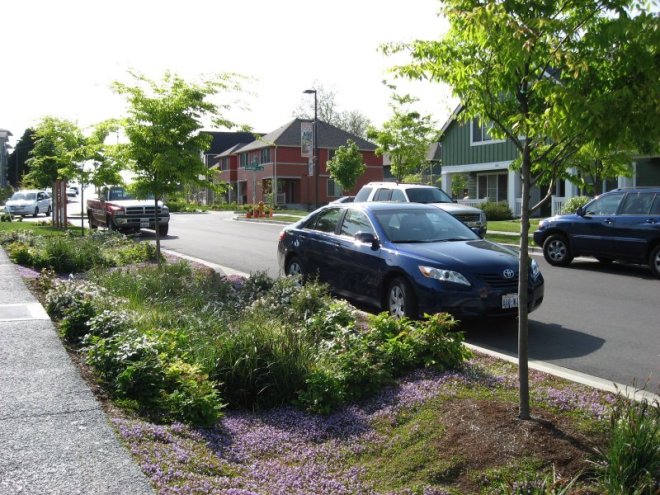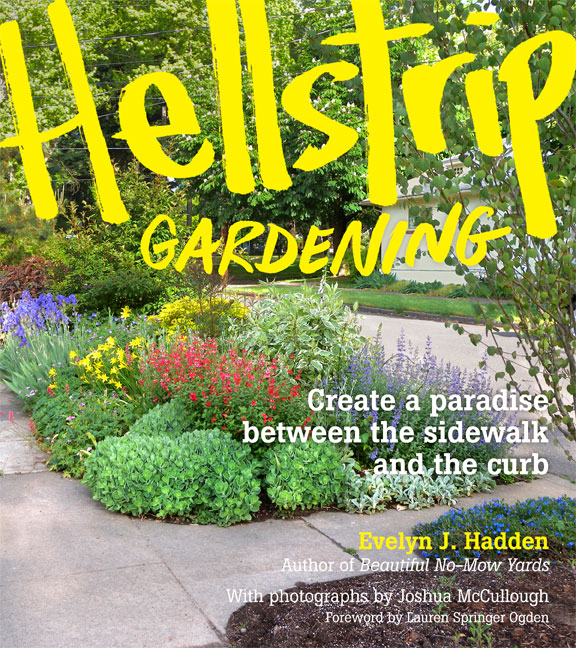Keeping a garden alive and thriving is replete with its inherent challenges. Plants have needs, and those needs vary by plant. Lots of sun might be great for one plant but harmful to another. Some plants are very drought tolerant and don’t require much water beyond what falls naturally from the sky, while others insist on regular supplemental irrigation. Plants also have preferred soil types, and that soil must provide a proper balance of nutrients. Then there is the litany of potential pests, diseases, and predators that can present themselves at any given moment. Frankly, it’s surprising that any garden stays alive, all things considered.
Some gardens have added challenges. They may be regularly visited (and trampled) by the public, who may or may not have pets in tow. They may be surrounded by paved surfaces which increase ambient air temperatures significantly and can introduce contaminants to the garden in the form of road salts, petrochemicals, fertilizers, sediments, and animal waste. They may encompass utility boxes, water meters, and road signs that require regular visits and occasional maintenance. All of these things describe the plight of a curbside garden, also known as a hellstrip – that section of green space between the road and the sidewalk. Comparatively, backyard gardens are veritable havens for plants.
Hellstrips have been on my mind for several years now. It all started back in graduate school while studying green roof technology. One of the macro benefits of green roofs is storm water mitigation. During a storm event, green roofs capture a greater proportion of precipitation compared to conventional roofs and slowly release it back into the environment. Storm water is a major issue in urban areas where the percentage of impervious surfaces is high. These surfaces prohibit precipitation from infiltrating the soil and recharging groundwater and nearby waterways. Instead, this water is rushed away and directed into either waste water treatment facilities or local waterways, carrying with it the contaminants that have collected on paved surfaces and rooftops. Gardens along roadways can be engineered to manage storm water in a similar way that green roofs do – capturing it, filtering it, and releasing it back into the environment at a slow pace – thereby minimizing the negative effects of storm water runoff.

A rain garden or bioswale planted in a hellstrip to help mitigate storm water runoff (photo credit: epa.gov)
The hellstrip in front of my parent’s house has been the source of many headaches. It is another reason why hellstrips have been on my mind. It is a weed patch, but not intentionally so. I remember many years ago when my mom told me she was going to replace the weed patch with buffalograss. She was elated by the idea – little or no mowing, very little supplemental water, a cool alternative to conventional lawn. Now, years later after planting dozens of buffalograss plugs and making a concentrated effort to keep them alive and prospering, the hellstrip remains a weed patch. But my mom hasn’t given up hope. The hellstrip will be conquered in due time.
Riding my bike to work last summer, I regularly rode past a house that proudly displayed the potential that curbside gardens could reach. The house sits on the corner lot of an intersection that, due to the angle of the connecting roads, gives the lot a long triangular shape. This makes the hellstrip longer than most of the others in this neighborhood. On this lengthy strip, the owners have planted an expansive and diverse vegetable garden. While once upon a time vegetable gardens were largely confined to backyards, they have lately been making more regular appearances in front yards. Few, however, are as bold and as public as this one – a true hellstrip success.
Last year, garden writer and lawn alternative enthusiast, Evelyn Hadden, put out a book called, Hellstrip Gardening. When I discovered this, I was intrigued, especially considering all of the mulling over hellstrips I had been doing for so long. I was curious to learn what she had to say. It has taken me until now to read it, but it seems like an opportune time to do so. After all, we are in pre-spring, a time when garden planning is being done in earnest. Perhaps this book will give me some ideas and encouragement to tackle some hard to garden spots this year. And maybe this review (and Hadden’s book) will inspire you to do the same. After all, this approach (as Hadden suggests) doesn’t have to be limited to curbside garden beds and can, in fact, be applied to any garden with challenges beyond the norm (like gardens along driveways and in alleyways, for example). The ultimate goal, for me at least, will be to pass along whatever knowledge I gain from this to my parents so that we can address their hellstrip issues once and for all.
Hellstrip Gardening is organized into four sections: Inspirations, Situations, Creation, and Curbside-Worthy Plants. This review will also have multiple parts that will be posted as I read through the book. The first section of the book is intended to inspire and encourage – to show through words and pictures what others have done and to give you that “if they can do it, so can I” sort of feeling. It also introduces some of the challenges of gardening in hellstrips as Hadden visits 12 gardens across the United States and talks with the people who designed, installed, and maintain them. She tells the story of how the gardens came to be and showcases some of the plants and plant combinations that were used in each situation. The challenges will be fleshed out in the following section; these narratives are meant more to demonstrate what can be done. There are dozens of great photos throughout, and the short plant lists at the end of each profile are sure to be useful.
Now that we’re inspired, next week’s post will take a look at what Hadden has to say about addressing challenges and overcoming obstacles that are unique to hellstrip gardens.


Love it! Hellstrip is a new term to me and I have one – actually like it and it is looking pretty good but not quite finished.
Very cool. You are a hellstrip gardener!
I need a tattoo or some biker boots or something appropriate to garden in. I have beach dune plants, Agave and Bromeliads in mine. Quite colorful and virtually no extra water.
Your hellstrip sounds beautiful. And I love the image of the tattooed biker/gardener. 🙂
I could qualify as a biker chick, I ride on the back of my husband’s bike (in Cowboy boots) Really a mild mannered grey haired old lady otherwise!
While I would like to re-do my hellstrips completely, add a lot of organic matter and replant all low water/high beauty plants, I don’t have time. So I’ve just been moving a few no-maintenance plants there for the last few years – catmint, which feeds the bees, and iris and garlic chives so far. There’s also some alfalfa that I let grow. It’s not great, but it’s an improvement on grass and weeds that must be mowed.
A hellstrip planted with low/no maintenance plants sounds great to me. It definitely beats a strip of weeds or turfgrass.
Pingback: Book Review: Hellstrip Gardening, part two | awkward botany
Just dropped in on you blog. I am anxious to get started on my Hellstrip garden. Since we talked, that is exciting to me. Nice book review.
Thanks for dropping by. I am excited about working on your hellstrip as well. Hope you don’t mind being featured in this post. 🙂
Pingback: 2015: Year in Review | awkward botany
Pingback: Weeds of Boise: Hellstrip on Jefferson Street – awkward botany